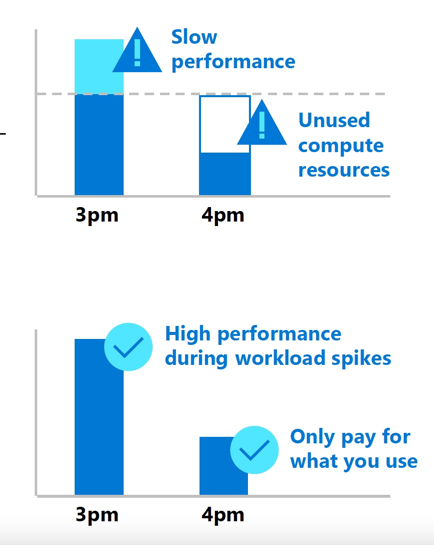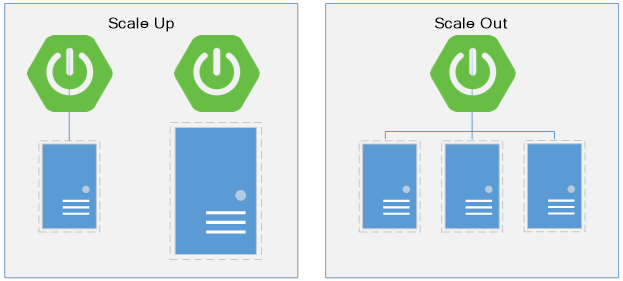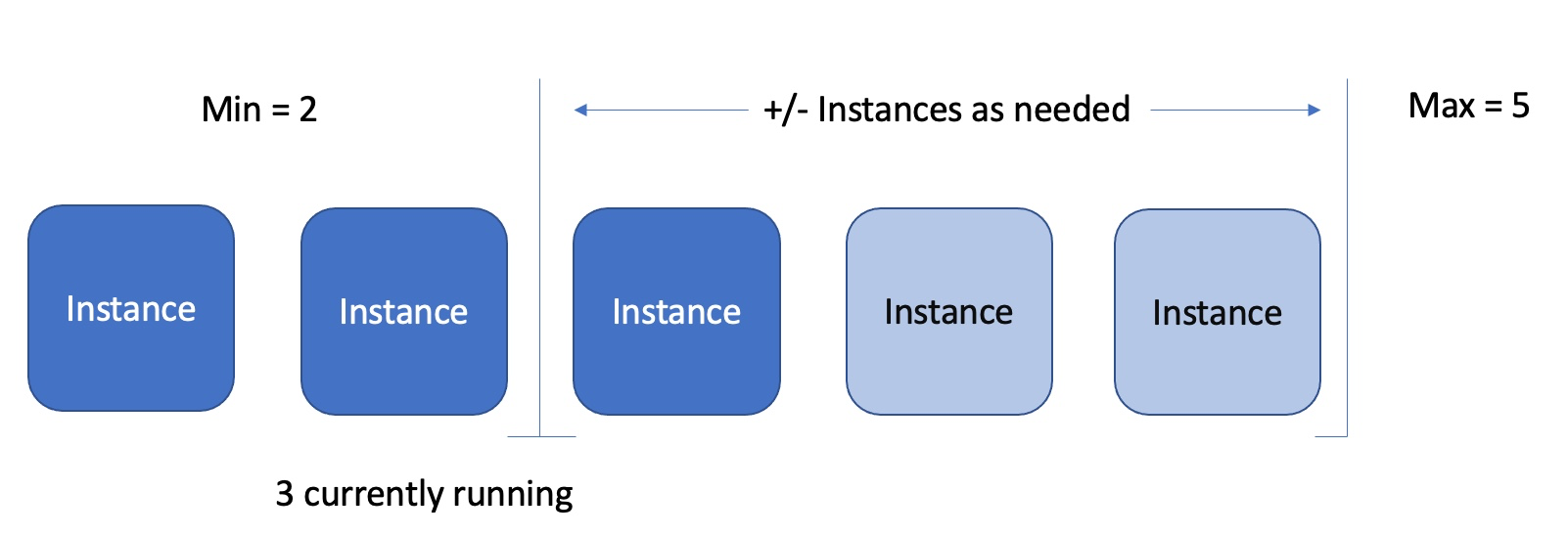What is autoscaling
In this unit, we look at Azure scaling concepts.
Elastic scaling
A primary advantage of the cloud is elastic scaling. You scale out by adding application instances based on increased demand. You can use as much capacity as you need, scaling out as load increases, and scaling in when the extra capacity isn't needed.
A classic example of the need for elasticity occurs when an organization's web site experiences unusually high loads. If the site can't scale to meet demand, requests take longer to process because they're queued waiting for processor time. To the customer, the site seems slow and unresponsive. In extreme cases, the site might even appear to be down.
Manual vs Automatic scale
You can configure scale settings for an application with either of two modes: manual or automatic. Manual is as you'd expect: you set the absolute count of instances. Automatic (autoscale), however, allows you to set rules that govern how and by how much you should scale.
Autoscale allows you to have the right amount of resources running to handle the load on your application. Autoscaling eases management overhead by reducing the need for system operators to constantly make decisions about adding or removing resources or checking the system's performance. Having a minimum makes sure your application is always running even under no load. Having a maximum limits your total possible hourly cost. You automatically scale between these two extremes using rules you create.
"Out" vs "Up"
There are two main ways that an application can scale:
Vertical scaling, which is also called scaling up and down, changes the capacity of a resource. For example, you could move an application to a larger compute size. Vertical scaling often requires making the system temporarily unavailable while it's being redeployed, so it's less common to automate vertical scaling.
Horizontal scaling, which is also called scaling out and in, adds or removes instances of a resource. The application continues running without interruption as new resources are provisioned. When the provisioning process is complete, the solution is deployed on these extra resources. If demand drops, the extra resources can be shut down cleanly and deallocated.
Autoscale only scales "out" (horizontally), which is an increase ("out") or decrease ("in") in the number of application instances.
Autoscale in Azure Spring Apps
Autoscaling in Azure Spring Apps monitors the resource metrics of a Spring application as it runs. It detects situations where extra resources are required to handle an increasing workload, and ensures those resources are available before the system becomes overloaded. Autoscale is a built-in feature of Azure Spring Apps that helps microservice applications do their best when demand changes.
Real-world example
Raley’s grocery stores needs to modernize the code and infrastructure for their Java-powered e-commerce sites hosted on Azure. The company also needs to optimize and automate its network allocation. Everything has to be robust, always-on, and—most importantly—easy to manage.
Raley’s chooses Azure Spring Apps. Azure Spring Apps is a managed service for Spring Boot, which provides the power of Kubernetes, coupled with real-time monitoring and autoscaling. It also enables Raley’s to adopt a true platform as a service (PaaS) architecture, seizing the benefits of the cloud more fully.
The service manages the infrastructure of Spring Boot microservice applications behind the scenes, so developers can focus on their code. When Java libraries or code is deployed, Spring Apps automatically wires the apps with the Spring service runtime.
After they’re deployed, Azure Spring Apps are fully integrated with Azure Monitor tools like Application Insights and Log Analytics. These tools allow easy, fully configurable monitoring of performance and errors. These same monitoring services can also drive autoscaling, helping to ensure that resources are appropriately sized for current loads.


